Research on Oxygen Supply System of Coal Mine Refuge Chamber Based on Personnel Location and Programmable Logic Controller
Abstract
1. Introduction
2. Analysis of the Current Situation of Oxygen Supply in Refuge Chamber
3. The Methods of Compressed Oxygen Supplying
3.1. Manual Oxygen Supply
3.2. Two-Stage Oxygen Supply Method
4. Realization of Compressed Oxygen
4.1. Design and Establishment of Refuge Chamble Model
4.1.1. Overview of the Refuge Chambre Model
4.1.2. Oxygen Supply System
4.1.3. Automatic Control of Carbon Dioxide Elimination
4.2. Real-Time Oxygen Supply Prediction Method
4.3. Strategy for Automatic Oxygen Supply Based on Real-Time Predicted Oxygen Supply
4.4. Experimental Verification of Compressed Oxygen Supply
4.4.1. Experiment Preparation
4.4.2. Experimental Process
4.5. Analysis of Results
- (1)
- Experimental results of manual oxygen supply method
- (2)
- Experimental results of the two-stage oxygen supply method
5. Conclusions
Author Contributions
Funding
Institutional Review Board Statement
Informed Consent Statement
Data Availability Statement
Conflicts of Interest
References
- Onifade, M.; Genc, B. A review of research on spontaneous combustion of coal. Int. J. Min. Sci. Technol. 2020, 30, 303–311. [Google Scholar] [CrossRef]
- Wu, B.; Wang, J.; Zhong, M.; Xu, C.; Qu, B. Multidimensional Analysis of Coal Mine Safety Accidents in China-70 Years Review. Min. Metall. Explor. 2023, 40, 253–262. [Google Scholar] [CrossRef]
- Li, X.; Wang, X.; Fang, Y. Cause-chain analysis of coal-mine gas explosion accident based on Bayesian network model. Clust. Comput. J. Netw. Softw. Tools Appl. 2019, 22, 1549–1557. [Google Scholar] [CrossRef]
- Li, L.; Fang, Z. Cause Analysis of Coal Mine Gas Explosion Based on Bayesian Network. Shock Vib. 2022, 2022, 1923734. [Google Scholar] [CrossRef]
- Zavialova, O.; Kostenko, V.; Liashok, N.; Grygorian, M.; Kostenko, T.; Pokaliuk, V. Theoretical basis for the formation of damaging factors during the coal aerosol explosion. Min. Miner. Depos. 2021, 15, 130–138. [Google Scholar] [CrossRef]
- Shi, L.; Wang, J.H.; Zhang, G.M.; Cheng, X.D.; Zhao, X.B. A risk assessment method to quantitatively investigate the methane explosion in underground coal mine. Process Saf. Environ. Prot. 2017, 107, 317–333. [Google Scholar] [CrossRef]
- Gao, Y.; Fu, G.; Nieto, A. A comparative study of gas explosion occurrences and causes in China and the United States. Int. J. Min. Reclam. Environ. 2016, 30, 269–278. [Google Scholar] [CrossRef]
- Zhao, H.; Qian, X.; Li, J. Simulation analysis on structure safety of coal mine mobile refuge chamber under explosion load. Saf. Sci. 2012, 50, 674–678. [Google Scholar] [CrossRef]
- Miao, L.G.; Niu, Y.Y.; Zhang, K. Study on System Design of Coal Mine Underground Permanent Refuge Chamber. Appl. Mech. Mater. 2013, 333, 2278–2281. [Google Scholar] [CrossRef]
- Meng, L.; Jiang, Y.; Zhao, Y.; Shan, R.; Song, Y. Probing into Design of refuge chamber system in coal mine. In Proceedings of the 1st International Symposium on Mine Safety Science and Engineering (ISMSSE), Beijing, China, 26–29 October 2011. [Google Scholar]
- Wang, Y.; Chen, X.; Li, Z.; Deng, L. Design and Analysis of the Six Systems of Refuge Chamber in Coal Mine. In Proceedings of the 1st International Workshop on Hydraulic Equipment and Support Systems for Mining (IWHEM 2012), Huludao, China, 17–18 August 2012; pp. 315–320. [Google Scholar]
- Du, Y.; Wang, S.; Jin, L.Z.; Wang, S.; Gai, W.-M. Experimental investigation and theoretical analysis of the human comfort prediction model in a confined living space. Appl. Therm. Eng. 2018, 141, 61–69. [Google Scholar] [CrossRef]
- Xiong, Y.W. Application and analysis of self—Provided oxygen supply methods in mine refuge chamber. Min. Saf. Environ. Prot. 2013, 40, 101–103. [Google Scholar]
- Jin, L.Z.; Zhao, Y.; Gao, N.; You, F.; Wang, L. Study on oxygen supply system of mine refuge haven. J. Saf. Sci. Technol. 2012, 8, 21–26. [Google Scholar]
- Yang, Z.; Jin, L.Z.; Wang, S. Study and Analysis of Human Survival Parameters in Mine Refuge Station. Open Civ. Eng. J. 2015, 9, 650–656. [Google Scholar]
- Gao, N.; Jin, L.; Hu, H.; Huang, X.; Zhou, L.; Fan, L. Potassium superoxide oxygen generation rate and carbon dioxide absorption rate in coal mine refuge chambers. Int. J. Min. Sci. Technol. 2015, 25, 151–155. [Google Scholar] [CrossRef]
- Gao, N.; Jin, L.Z.; Wang, L. Research and application of oxygen supply system in Changcun Coal Mine refuge haven. J. China Coal Soc. 2012, 37, 1021–1025. [Google Scholar]
- Zhang, Z.; Yuan, Y.; Wang, K. Experimental investigation on Influencing Factors of air curtain systems barrier efficiency for mine refuge chamber. Process Saf. Environ. Prot. 2016, 102, 534–546. [Google Scholar] [CrossRef]
- Yang, Z.; Jin, L.; Yang, Y. Experiment and Analysis on Positive Pressure System of Mine Refuge Chamber. Metall. Min. Ind. 2015, 7, 1142–1149. [Google Scholar]
- Zhang, Z.J.; Yuan, Y.P.; Wang, K.Q. Effects of number and layout of air purification devices in mine refuge chamber. Process Saf. Environ. Prot. 2017, 105, 338–347. [Google Scholar] [CrossRef]
- Wang, S.; Jin, L.Z.; Yang, Z. Study on air distribution characteristics and human thermal comfort of the refuge station under forced air supplying condition. J. China Coal Soc. 2014, 39, 1321–1326. [Google Scholar]
- Mejías, C.; Jiménez, D.; Muñoz, A. Clinical response of 20 people in a mining refuge: Study and analysis of functional parameters. Saf. Sci. 2014, 63, 204–210. [Google Scholar] [CrossRef]
- Hao, X.; Guo, C.; Lin, Y. Analysis of heat stress and the indoor climate control requirements for movable refuge chambers. Int. J. Environ. Res. Public Health 2016, 13, 518. [Google Scholar] [CrossRef]
- Wang, S.; Jin, L.; Han, Z. Discharging performance of a forced-circulation ice thermal storage system for a permanent refuge chamber in an underground mine. Appl. Therm. Eng. 2017, 110, 703–709. [Google Scholar] [CrossRef]
- Jia, Y.; Liu, Y.; Sun, S. Refrigerating characteristics of ice storage capsule for temperature control of coal mine refuge chamber. Appl. Therm. Eng. 2015, 75, 756–762. [Google Scholar] [CrossRef]
- Zhang, B.; Zhang, A.; Yin, Z.; Gu, Y.; Jing, Z. Design Scheme of Outside Environmental Monitoring System for Coal Mine Mobile Refuge Chamber. In Proceedings of the International Conference on Manufacturing Engineering and Automation (ICMEA 2012), Guangzhou, China, 16–18 November 2012; pp. 1789–1792. [Google Scholar]
- Zhang, Z.J.; Jin, T.; Wu, H.W.; Day, R.; Gao, X.K.; Wang, K.Q.; Mao, R.Y. Experimental investigation on environmental control of a 50-person mine refuge chamber. Build. Environ. 2022, 210, 108667. [Google Scholar] [CrossRef]
- Zhang, Z.J.; Wu, H.W.; Wang, K.Q.; Day, R.; Yuan, Y.P. Air quality control in mine refuge chamber with ventilation through pressure air pipeline. Build. Environ. 2020, 13, 46–58. [Google Scholar] [CrossRef]
- Li, J.; Jin, L.; Wang, S.; Zhang, Z.; Xu, Y.; Li, Q. Experimental Study on Oxygen Supply Performance Influence Factors of Potassium Superoxide Oxygen Board Used in Confined Space. In Proceedings of the 2nd International Conference on Energy and Environmental Protection (ICEEP 2013), Guilin, China, 19–21 April 2013; pp. 363–367. [Google Scholar]
- US Government. Electronic Code of Federal Regulations e-CFR Title 30 Part 75; US Government: Washington, DC, USA, 1970. [Google Scholar]
- Hall, E.E.; Margolis, K.A. Information Circular 9524—How to Operate a Refuge Chamber: A Quick Start Guide Instructor Guide and Lesson Plan; CDC: Atlanta, GA, USA; National Institute for Occupational Health and Safety: Washington, DC, USA, 2010. [Google Scholar]
- Shao, H.; Jiang, S.; Tao, W.; Wu, Z.; Zhang, W.; Wang, K. Theoretical and numerical simulation of critical gas supply of refuge chamber. Int. J. Min. Sci. Technol. 2016, 26, 389–393. [Google Scholar] [CrossRef]
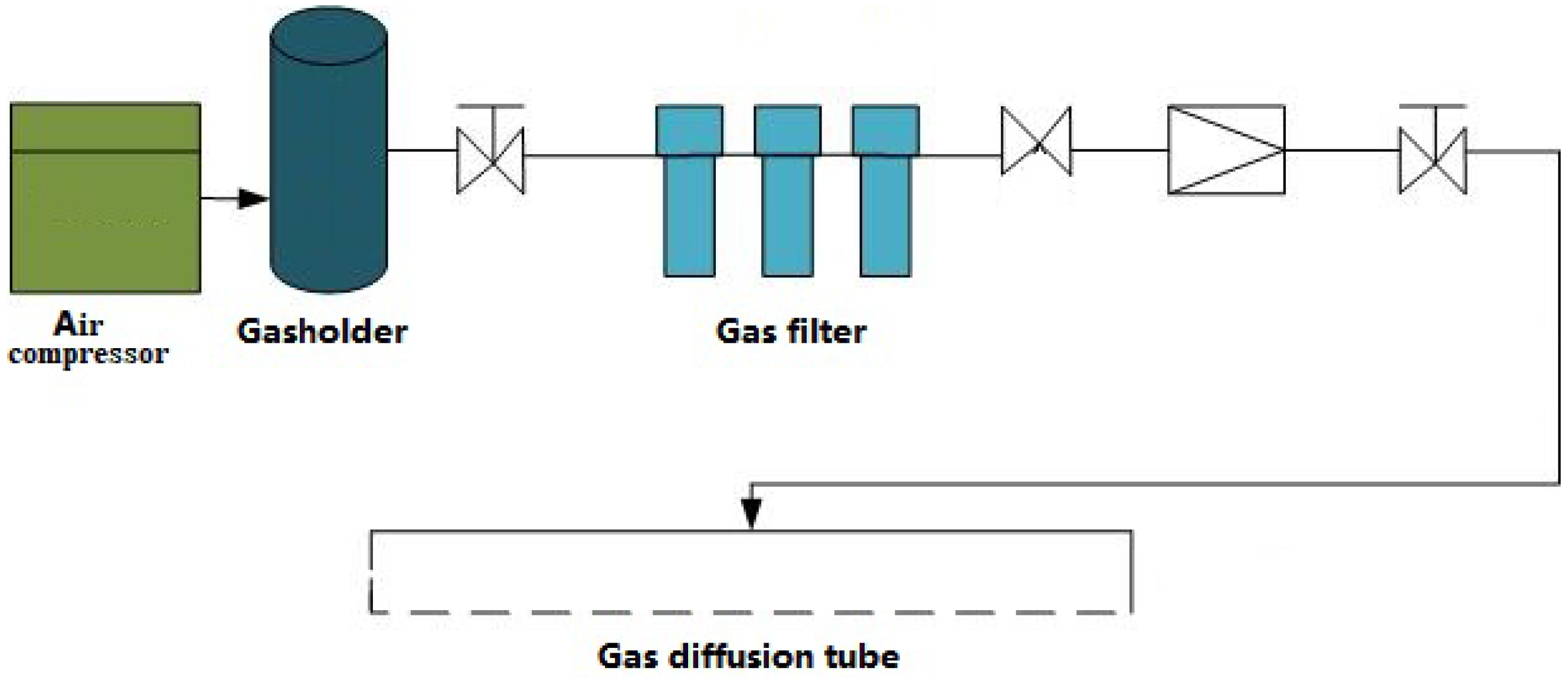

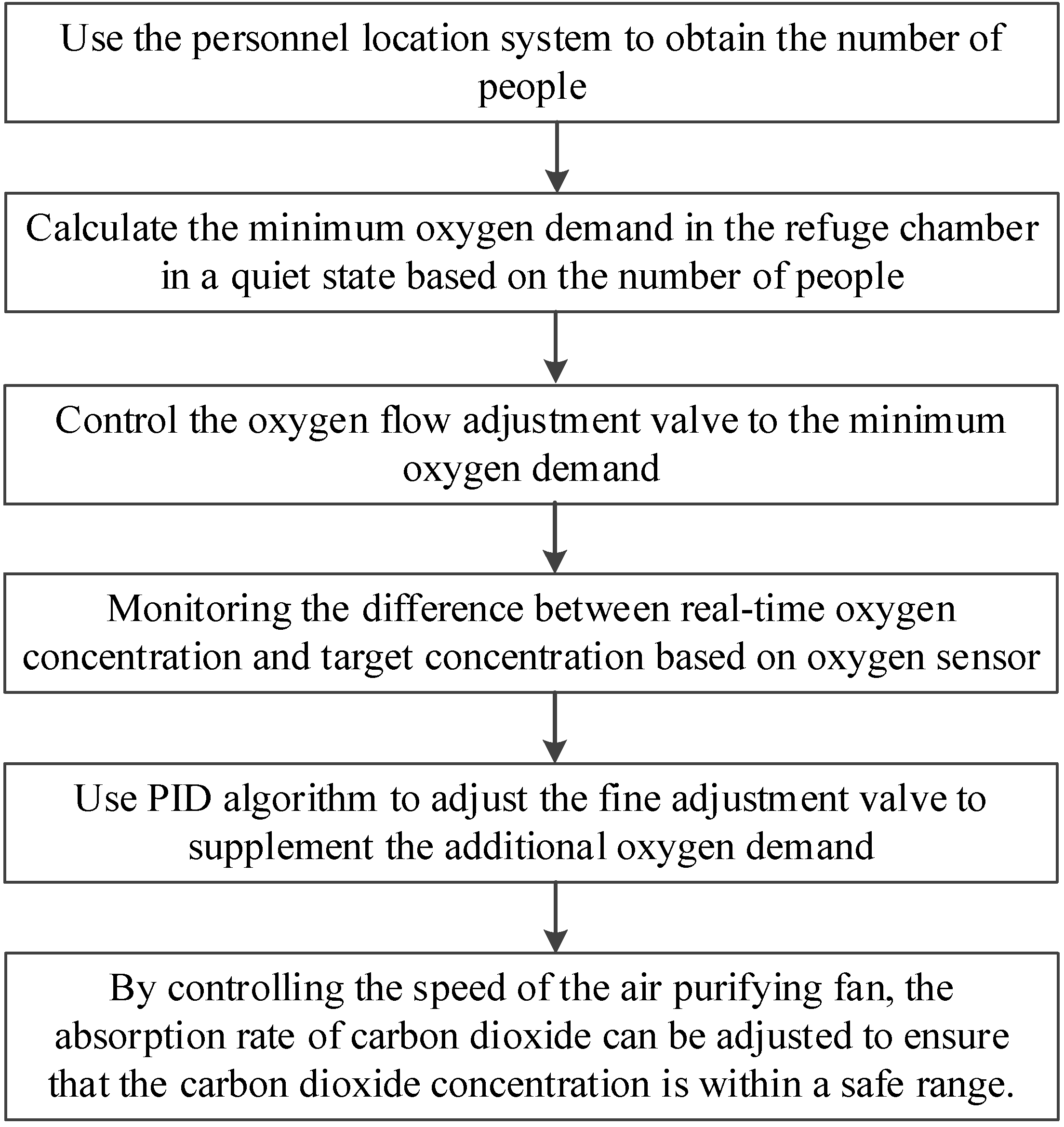




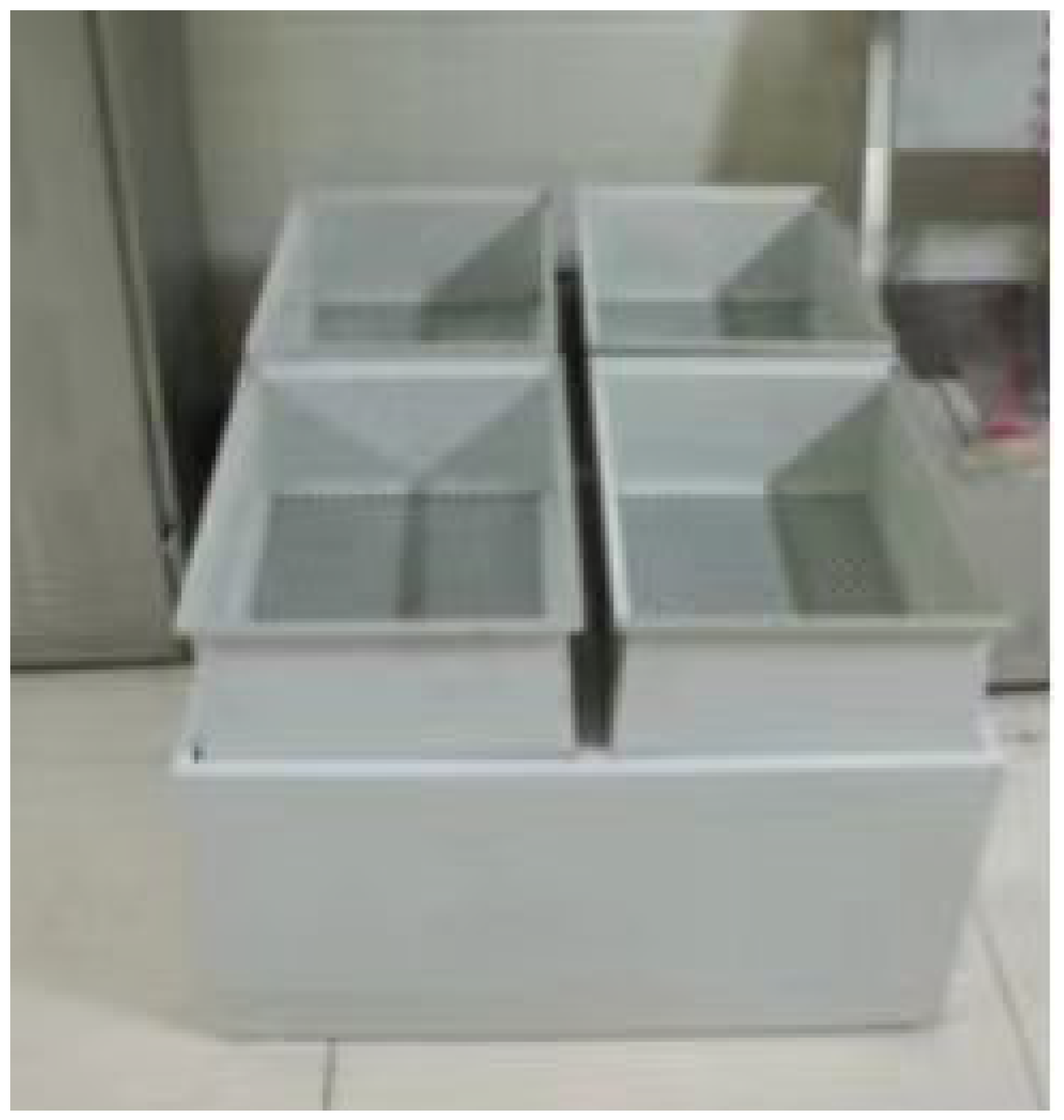

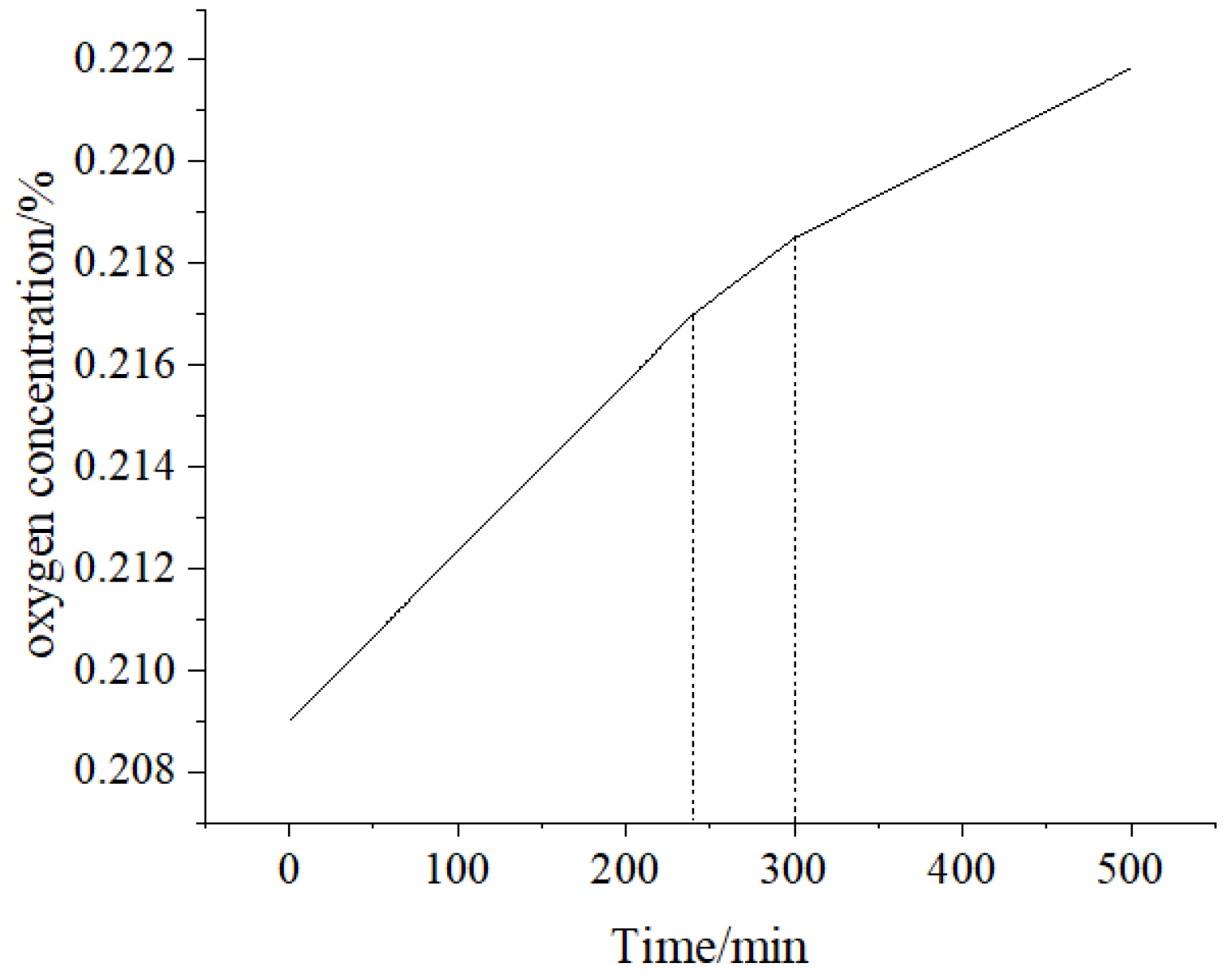
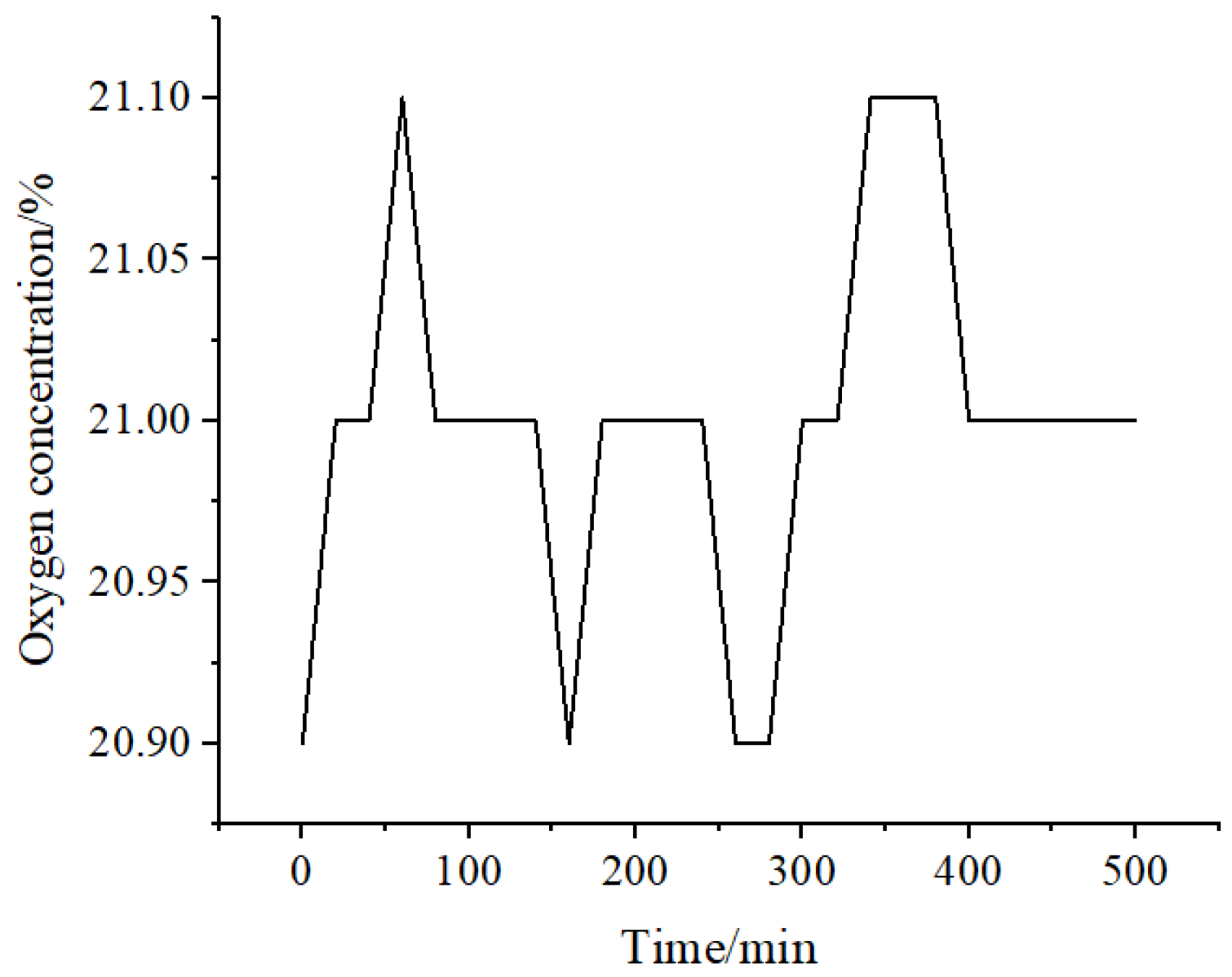
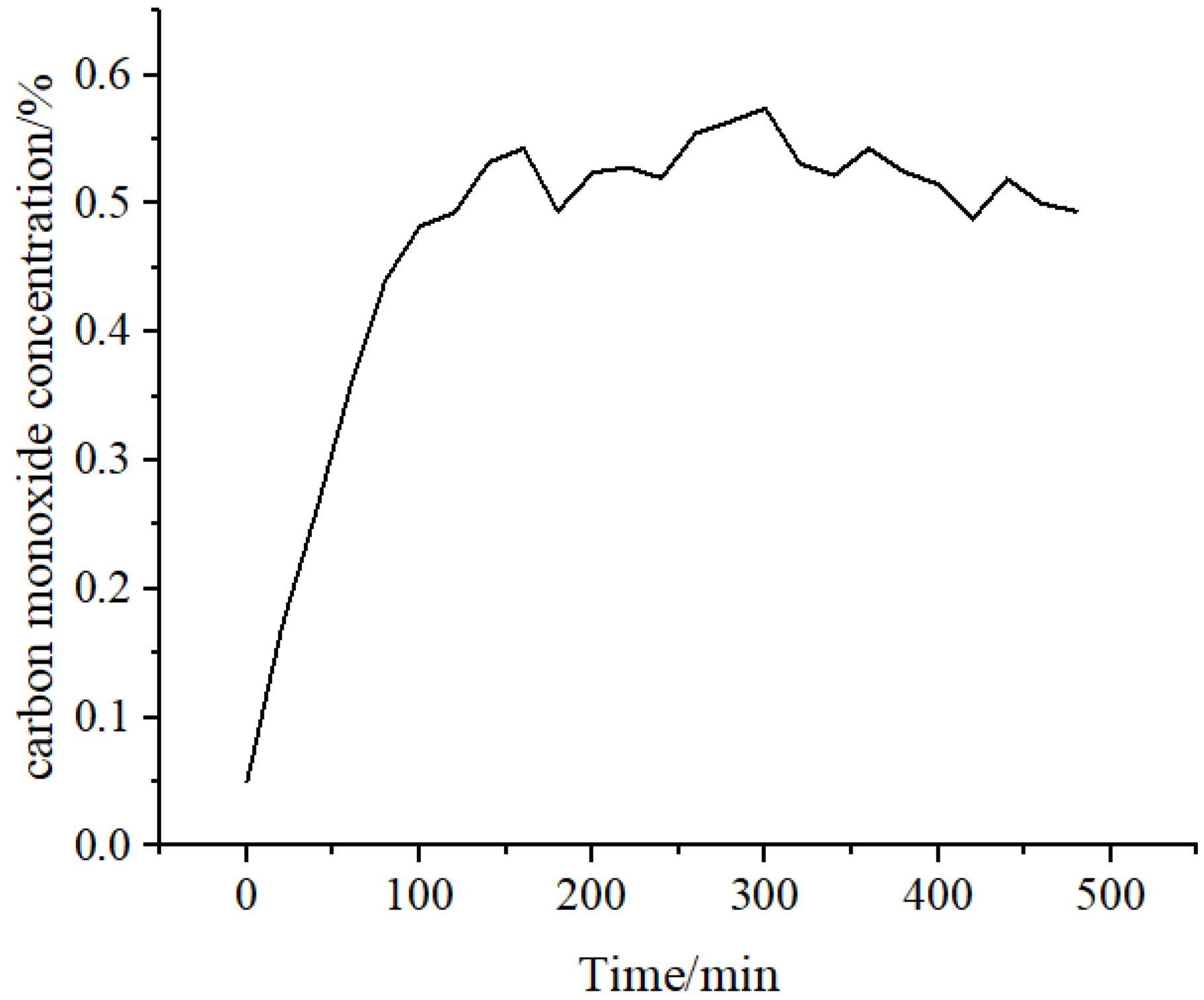
Disclaimer/Publisher’s Note: The statements, opinions and data contained in all publications are solely those of the individual author(s) and contributor(s) and not of MDPI and/or the editor(s). MDPI and/or the editor(s) disclaim responsibility for any injury to people or property resulting from any ideas, methods, instructions or products referred to in the content. |
© 2023 by the authors. Licensee MDPI, Basel, Switzerland. This article is an open access article distributed under the terms and conditions of the Creative Commons Attribution (CC BY) license (https://creativecommons.org/licenses/by/4.0/).
Share and Cite
Zhang, Z.; Shao, H.; Jiang, S.; Guo, C.; Wu, Z. Research on Oxygen Supply System of Coal Mine Refuge Chamber Based on Personnel Location and Programmable Logic Controller. Appl. Sci. 2023, 13, 6435. https://doi.org/10.3390/app13116435
Zhang Z, Shao H, Jiang S, Guo C, Wu Z. Research on Oxygen Supply System of Coal Mine Refuge Chamber Based on Personnel Location and Programmable Logic Controller. Applied Sciences. 2023; 13(11):6435. https://doi.org/10.3390/app13116435
Chicago/Turabian StyleZhang, Zherui, Hao Shao, Shuguang Jiang, Chaowei Guo, and Zhengyan Wu. 2023. "Research on Oxygen Supply System of Coal Mine Refuge Chamber Based on Personnel Location and Programmable Logic Controller" Applied Sciences 13, no. 11: 6435. https://doi.org/10.3390/app13116435
APA StyleZhang, Z., Shao, H., Jiang, S., Guo, C., & Wu, Z. (2023). Research on Oxygen Supply System of Coal Mine Refuge Chamber Based on Personnel Location and Programmable Logic Controller. Applied Sciences, 13(11), 6435. https://doi.org/10.3390/app13116435





